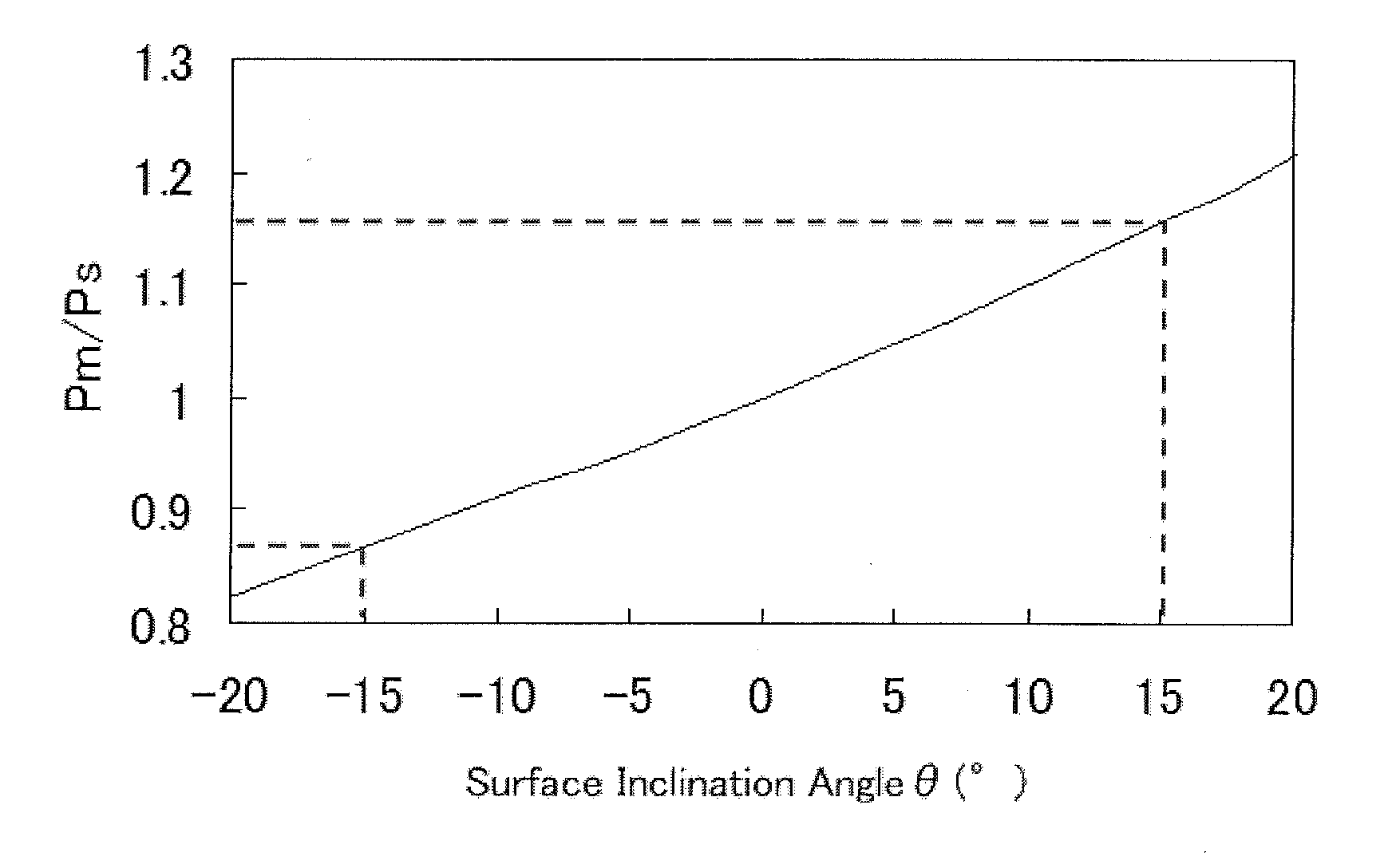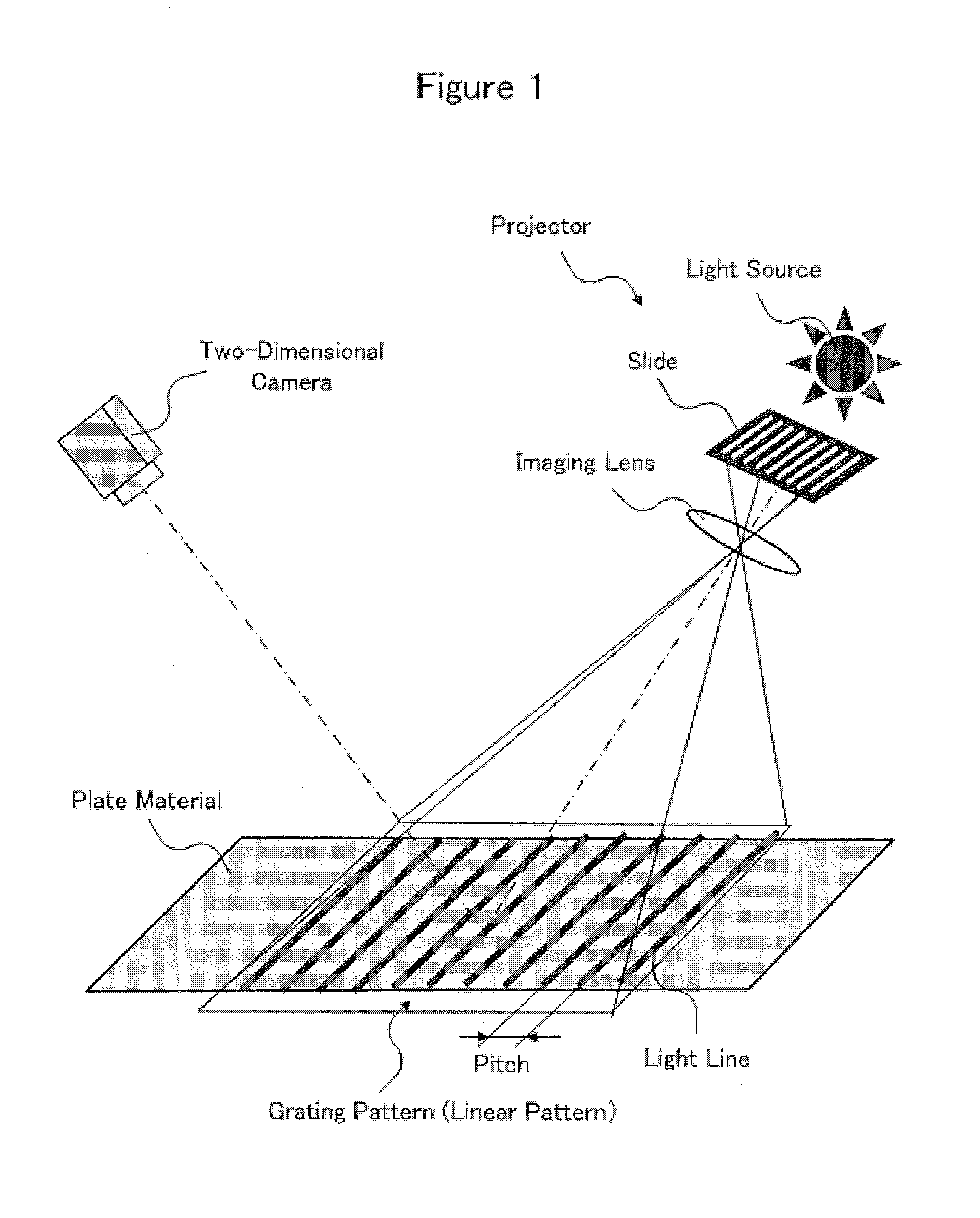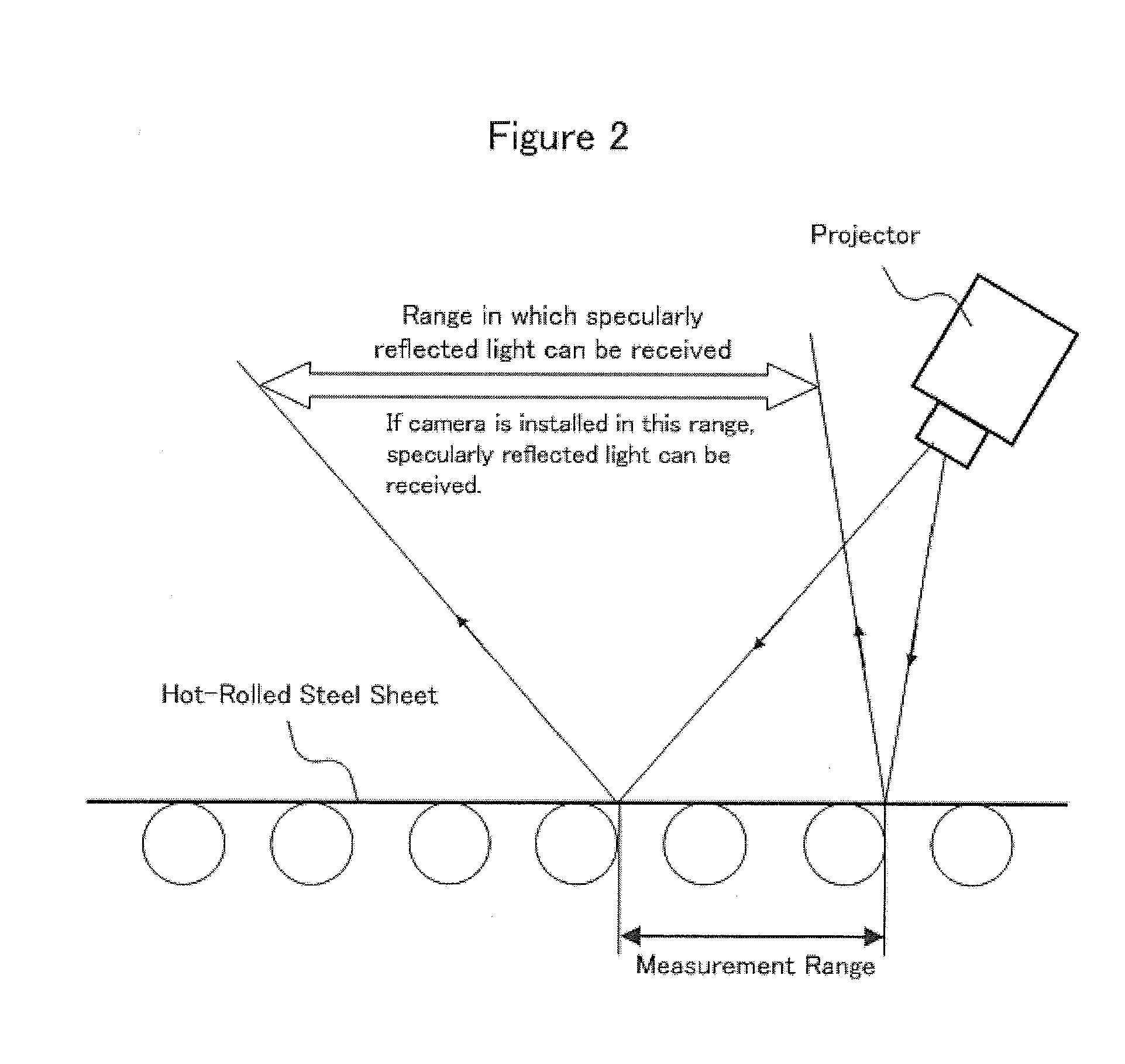Method for measuring sheet material flatness and method for producing steel sheet using said measuring method
a technology of flatness and measurement method, which is applied in the direction of measuring devices, instruments, and profile control devices, etc., can solve the problems of insufficient installation space of the device, linear pattern is liable to collapse, etc., to achieve high accuracy, flatness of the sheet material can be measured, and high accuracy
- Summary
- Abstract
- Description
- Claims
- Application Information
AI Technical Summary
Benefits of technology
Problems solved by technology
Method used
Image
Examples
Embodiment Construction
[0076]One embodiment of the present invention will now be described with reference to the accompanying drawings as appropriate. In the description below, explanation is given by taking as an example the case where the sheet material is a hot-rolled steel sheet, and the flatness (degree of steepness) thereof is measured on the exit of a finishing mill train on a hot-rolled steel sheet production line.
[0077]FIG. 5 is a schematic view showing an outline configuration example of a flatness measuring apparatus for carrying out the flatness measuring method in accordance with the present invention. FIG. 6 is a schematic view showing the installation state of the flatness measuring apparatus shown in FIG. 5. As shown in FIGS. 5 and 6, a flatness measuring apparatus 100 of this embodiment includes a projector 1 for projecting a staggered pattern P, which is a light and dark pattern, onto the surface of a hot-rolled steel sheet S running horizontally in the longitudinal direction so that the...
PUM
| Property | Measurement | Unit |
|---|---|---|
| thickness | aaaaa | aaaaa |
| height | aaaaa | aaaaa |
| length | aaaaa | aaaaa |
Abstract
Description
Claims
Application Information
 Login to View More
Login to View More - R&D
- Intellectual Property
- Life Sciences
- Materials
- Tech Scout
- Unparalleled Data Quality
- Higher Quality Content
- 60% Fewer Hallucinations
Browse by: Latest US Patents, China's latest patents, Technical Efficacy Thesaurus, Application Domain, Technology Topic, Popular Technical Reports.
© 2025 PatSnap. All rights reserved.Legal|Privacy policy|Modern Slavery Act Transparency Statement|Sitemap|About US| Contact US: help@patsnap.com



